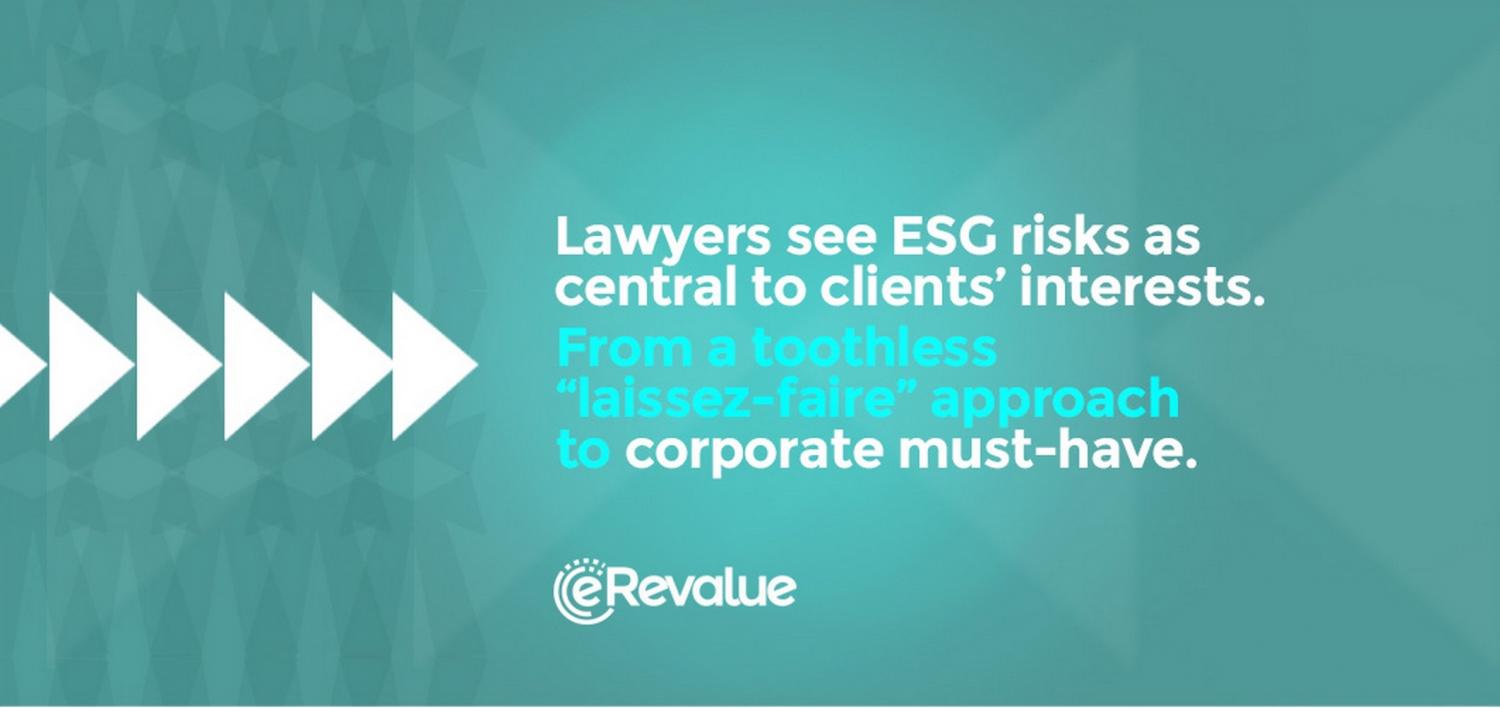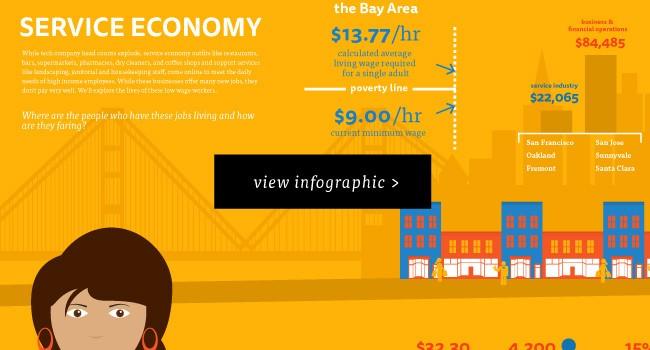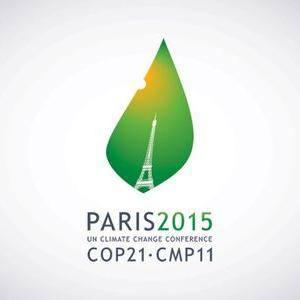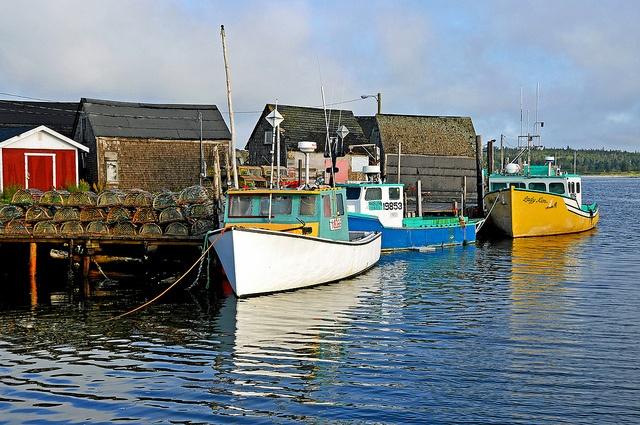Hacking Human Suffering is the Only Real Growth Industry


Editor's Note: This post originally appeared on Unreasonable.is.
By Corey Kohn
When I first became a partner at DOJO4, things were rocking steady, decent clients were finding us with little or no effort on our part, and a general sense of creamy, rich ease pervaded the business. Nevertheless, our then-CEO and I spoke often about the longevity of the industry and the fact that DOJO4’s success was tied to the bubble-like nature of the tech industry.
We talked a lot about business development and how to best insulate ourselves in the long term against an eventual downturn. At the time, I could not foresee the tech bubble bursting any time soon, but the answer to where we should be putting our energy for long-term stability and success was crystal clear to me from the get go: human suffering.
That’s right. The painful truth is that solving the problems of human and environmental disease is one of the only guaranteed growth industries. That may sound like a dismal pronouncement, but I also see it as the greatest opportunity of our time. At DOJO4 — and many, many other tech businesses—we have all the circumstances in place to apply our skills, talents, and ingenuity to solving real problems, using the same technical and design innovations that we had been applying mostly just to commercial endeavors.
Making that shift would allow us to engage our work in a genuinely meaningful way and allow us to have a sustainable, impactful business at the same time. This line of thinking can run somewhat counter to conventional business-school wisdom. Make money and help people at the same time? No way. Helping people and the environment is the domain of NGOs, non-profits, and philanthropies.
This reaction is an unfortunate outcome of our cultural approach to altruism. Donating our time and money for the benefit of others can be a wonderful thing but it is not the only — maybe not even the best — way to galvanize our best efforts for the benefit of ailing social and environmental systems.
The relatively recent rise of social entrepreneurship has exposed this approach and solution — using the power of business to provide innovative solutions to society’s most pressing social problems, tackling major social and environmental issues, and offering new ideas for wide-scale change. Rather than leaving societal needs to the government or business sectors, these entrepreneurs find what is not working and solve the problem by changing the system, selling the solution, and persuading entire societies to move in different directions.
At their best, this is what technologists can do, too: solve the problem by changing the system, spreading the solution, and persuading entire societies to move in different directions.
With my outsider’s perspective on the tech industry (I was educated as a scientist and have spent most of my career in documentary film), I continue to marvel at the fact that the most inspired technologists have essentially the same qualities as entrepreneurs (such as the willingness to self-correct, share credit, and break free of established structures).
Unfortunately, we’ve squandered a lot of our developer smarts and talent on creating commercially self-fulfilling junk food for the mind and an intricate digital economy stickily entwined with proprietary software, profits, and data appropriation. Many technologists feel like they are stuck with that as their only option. But, if you really want a better world, a successful career and a more meaningful life, writing code that directly alleviates human and environmental suffering is a real option and a living, breathing opportunity.
It is possible. Several years after those initial conversations at DOJO4, we’ve committed to that triple bottom line of people, planet, and profits. We see that the alleviation of human, social, and environmental suffering is the best use of our energy because this ‘sector’ has essentially endless needs, and is thus a fertile, demand-full market; it draws on the best qualities of developers’ innate approach to problem-solving and knowledge-building; it allows us to feel more engaged in a meaningful life, and that means we do better work.
So far, acknowledging that solving ‘real’ human and environmental problems is a valuable growth industry, and choosing to put all our eggs in that basket, is the best business decision we’ve ever made.
Image credit: Flickr/Xenja Santorelli
Corey Kohn is the COO of dojo4, a creative software design, development and media team in Boulder, Colorado.
Lawyers See ESG Risks as Central to Clients’ Interests


By Emmanuelle Haack
Last October, the 28 EU member states adopted the binding EU Directive on disclosure of non-financial information. More recently, a new French proposal for a binding new reporting framework is signaling further regulatory upswing.
Two years after the Rana Plaza tragedy, the French proposal seeks to make parent companies liable for their global supply chain -- representing a move to a full liability regime with fines of up to 10 million euros (US$11.2 million).
Until recently, the law has played a limited part in the push for corporate transparency on environmental, social and corporate governance (ESG) issues, a space that has been largely unfocused and undefined. Transparency on these issues was, until recently, fueled by NGO and corporate initiatives to “do good.”
Consequently, many companies were blamed for greenwashing, as their reports lacked rigor and were disconnected from the business.
During the 'voluntary days,' lawyers were seen as “discouraging too much disclosure on these issues,” consistent with guidance to keep reports uncluttered, whereas corporate communications and sustainability professionals were advocating greater transparency. This type of transparency was most often incorporated into sustainability reports that were less likely to be subject to the same level of rigorous verification as an annual (financial) report.
But the time has come for the inevitable friendship between lawyers and corporate ESG experts. Our latest research shows a 45 percent growth in the number of ESG-related regulations calling for more robust corporate transparency worldwide since 2012.
As Vanessa Harvard-Williams, head of global law firm Linklaters’ sustainability practice and co-head of its risk and governance team, explains: “Regulatory developments around ESG should be watched closely by business and lawyers alike – we are now making the transition from a normative to a compliance framework. Although the regulatory risks of non-compliance with these regulations are often quite limited, the potential reputational and commercial damage from being seen not to comply can be significant.”
With ESG issues becoming regulated, business has to be in a position to provide the required information in a timely and accurate way. Non-compliance with these new regulations is likely to bring with it reputation risks, in addition to triggering potential regulatory fines and, in a few cases, litigation threats. Over time, it may also give rise to procurement issues where business or government purchasers apply ESG criteria.
Companies have to ask themselves: how do we understand these new regulatory risks and opportunities, and are our legal teams and advisors equipped with the right information to respond?
Incoming regulations in this area are often less developed than in more mature areas of law; this causes problems in determining what information is required, and in drawing the line between “nice-to-have” and “must-have.”
Take conflict minerals as an example. This topic gained importance in 2012 with the U.S.Dodd-Frank Act. On May 20, 2015, the EU Parliament received400 positive votes that EU importers sourcing in conflict areas should disclose this information. More regulation seems likely, though the capacity of businesses to supply demonstrably conflict free minerals remains very restricted at present.
In the meantime, EU-registered large or listed companies engaged in extractive activities are preparing to report on any payments within certain categories made to government or government owned entities above 100,000 euros (or around $112,000) with respect to these activities. Reporting will commence in financial year 2016 for the UK and in financial year 2017 for the rest of the EU.
Companies active in the U.K. with a turnover of 36 million euros will also be required to report on the steps taken to ensure that their own activities and those of their supply chains are free from modern slavery and human trafficking, under a reporting obligation that takes force October 2015.
Let’s look at the broader momentum for more robust disclosure.
Governments are increasingly enacting transparency requirements within their legal regimes. This is, in part, a move to contain global corruption risks, as well as a response to pressure from civil society and to the eroding tolerance of the public for governance failures in the private sector.
In some cases, countries perceive that having strong regulatory frameworks will help them to benefit from the soaring amount of cross-border investments that are happening nowadays. Maybe they understand that in today’s hyper-connected world, the reputation of a country cannot be seen separate from the reputation of the companies driving its economy.
With the Toshiba scandals spread all over major headlines last month, Japan suffered. In Japan, regulatory changes are a fundamental part of the process to restore trust following a series of governance failures.
It is no coincidence that the new Japanese Corporate Code of Governance was recently revised: the country is moving towards building a new corporate governance image following high profile challenges, including Toyota in 2010, Olympus a year later, the management of the Great Earthquake in 2011 and, most recently, the Toshiba issues.
These examples shed light on the importance of an effective regulatory framework to facilitate a country’s ability to prevent serious wrongdoing, subsequent cover-ups and severe financial consequences.
Integrating ESG and transparency is without question becoming the new normal – and not just from a compliance standpoint. Companies that dare to ignore those developments are at high regulatory, reputational, and competitive risk. As a business, it vital to understand which countries are pushing the envelope.
Here are a few tips for being prepared.
First, look at voluntary guidance. Many regulations derive their inspiration from already existing international standards and voluntary guidance, such as the Ruggie Principles, the Global Reporting Initiative Guidelines, the 2015 OECD Principles of Corporate Governance or the ILO Declarations.
Helle Bank Jorgensen, chairman of eRevalue, CEO for the advisory firm B. Accountability and a facilitator for U.N. Global Compact Board Program, confirms the development from soft to hard law over her 25-year-career: “When I studied business law and trained to become a state authorized public accountant, it was legal to deduct bribery in tax-returns, though not well-regarded.”<
“Today,” she explains, “MBA students are shocked that it has ever been legal. The late Ray Anderson, founder of Interface might have said it best: ‘In the future people like me will go to jail.’ He was referring to the environmental harm companies could legally do.”
“Another example,” Jorgensen continues, “is the above-mentioned French law proposal. Since the mid-nineties, I have helped many leading brands in building responsible supply chain programs; however, it all started because stakeholders wanted to hold companies to a higher standard, while the CEOs originally said this is not our responsibility – it is that of our suppliers. So yes, stakeholder dialogue and keeping an eye on soft regulations is a must for companies that want to last in this fast-changing environment.”
Second, watch the courts. TheDutch Court breakthrough judgement in June added a momentum to climate change that is now reverberating in global civil movements worldwide. By ruling that the government was knowingly contributing to a breach, the Hague allowed a group of citizens to sue their government over its inaction on climate change.
With Belgium, Norway and the U.K. already embracing similar initiatives, it is said that the Urgenda Climate Case could act as a powerful precedent for more cases to be triggered.
Third, watch how companies and law firms respond to a new compliance regime. These new laws and rulings need to be implemented by putting company secretaries and general counsel front and center.
Sustainability issues are no longer dealt exclusively with by the corporate responsibility committee or corporate communications professional. Business need to understand the issues from a legal perspective, and prepare to respond accordingly.
More broadly, sustainability and business’ role in society are increasingly important issues for boards to consider and manage together with other enterprise risks and opportunities.
Last week, for instance, we witnessed the launch of a Campaign urging listed company’s board of directors to issue an annual Statement of Significant Audiences and Materialityin order to communicate publically who their stakeholders are and what are the material issues or objectives of the company.
The American Bar Association, U.N. Global Compact General Counsel Ursula Wynhoven and Professor Robert Eccles initiated a knowledge sharing project to enable this project.
Through notes posted with the ABA, law firms around the world have explained the treatment of sustainability issues under corporate law relating to directors’ duties and company reporting. The focus of this exercise, much like the work done by law firms in support of Professor Ruggie’s U.N. Guiding Principles on Business and Human Rights is to define the parameters of those legal duties.
In particular, there was value in clarifying that social and environmental risks can form one of a range of factors to be considered in the discharge of fiduciary and other duties, demonstrating what is known in the U.K. as “enlightened shareholder value.”
The template for these notes was developed by the team with Harvard-Williams of Linklaters.
The above examples reinforce the growing regulatory push for more robust transparency, and the resulting complexity of understanding the evolving changes and high cost associated with keeping up.
What’s next? Some questions we’re thinking about include: How is the sharing economy going to be regulated? What about the circular economy? Are there going to be further rulings on supply chain responsibility? Or, as questioned in this week’s FT article, are stock exchanges going to tighten up their listing requirements on ESG?
Emmanuelle Haack is a Regulatory Analytics Associate at eRevalue.
Learn more about how we’re staying on-top of today’s rapidly changing regulatory landscape aboard Datamaran.
We’d like to thank Vanessa Harvard-Willams (Linklaters) and Helle Bank Jorgensen (eRevalue, B.Accountability, UN Global Compact) for their contributions.
As Good As It Gets? Fortune's 'Change The World' 2015 Ranking


By Graham Sinclair
On August 20, Fortune Magazine released its first companies’ Change the World (CTW) ranking of “businesses that are doing well by doing good." The Fortune cover story aims to answer the small question: Is capitalism a good thing? It’s a huge ask, and hats off to Fortune for attempting to add to their rankings franchises.
Fortune’s approach lists 51 companies that made “sizable impact on major global social or environmental problems as part of their competitive strategy.” The timing for the project is attributed by Fortune editors partly to the Pope’s calls for a rethink of consumption capitalism and the role of business in society and the planet, highlighted in Vatican's encyclical. No doubt it's also in time for the Pope’s visit to the U.S., around the U.N. Sustainable Development Goals launch in New York in late September 2015.
Fortune is a dominant brand in business rankings, at least in OECD markets. Fortune lists include annual rankings of “the world’s top companies and executives” and are often their best-selling issues on newsstands. Adding CTW is a calculated risk, shared with FSG, a consultancy, and Harvard Business School professor, Michael Porter, best known for his strategy work (Porter's 5 Forces) and lately for a pivot into shared value, leading to the Shared Value Initiative.
Reaction to CTW has been mixed. Fortune did a decent job marketing the rankings using its channels, to audiences on CBS, Facebook and Fortune.com, if not always coherently. The ranked companies (for example, Starbucks and Discovery) have been tipping their hats to CTW, as one would expect from company PR professionals and as expected in any companies ranking business model: Any ranking relies on the PR multipliers.
Some company mentions have made more, and some less, of the Porter and FSG input. All sustainability practitioners may need to reference it in some way going forward. Opinionistas have ranged from “where’s the ranking?” by Andrew Winston in HuffPo, to “only seven European companies” flagged on Reddit, to the comments section weirdness on Fortune editor Alan Murray’s LinkedIn post at launch. Murray may have sparked that with his followership by throwing in an Ayn Rand reference or his hyperbolic close: “The future of capitalism — and the future of mankind — depends on it." It's probably part of the journey of the former deputy managing editor at the Wall Street Journal, who has had a convoluted history on the topic of materiality of environmental, social and governance (ESG) factors as material to business strategy (remember Will 'Social Responsibility' Harm Business?).
Everyone reading TriplePundit has moved well beyond the idea of profit motive as the sole factor for business or professional success. Sure, we want to test the ROI of sustainability, but stakeholders have replaced shareholders in the last decade. In fairness, Porter’s shared value pivot only found full voice in his 2013 TED Global. But how many sustainability practitioners today are convinced by the contention in the Porter and Kramer 2011 HBR article that “most companies remain stuck in a 'social responsibility' mindset in which societal issues are at the periphery, not the core”? Yet firms lacking strategic citizenship remains the “big idea” for CTW in 2015. Is this new? Is it innovative? Is it representative?
Which companies made the list?
Most of the firms you have heard of (full ranking with callouts is here) with both listed and unlisted companies, privately-held majors like Cargill, and minors like SpaceX. Under-reported successes like Jain Irrigation do feature.
Strangely, the 50 companies became 51 when the adjudicators could not break the tie for first place, split between London- and Kenyan-listed telecoms majors Vodafone and Safaricom, respectively. Dale Buss, posting on Brandchannel, spotted that there is no big oil or big manufacturers, and the shocker: Ikea and Nike are on the list, but Apple is not.
Kramer claims the combination of doing good business and society is “the magic to getting on this list.” CTW claims that the world mostly has U.S.-headquartered firms that get it right: 24 of 51. This U.S. overweight may reflect the familiarity of Fortune’s readership or FSG’s influence base, but if CTW seeks to be changing the world, a more global lens makes sense. Geographic diversity would increase the opportunity for alternative ideas from other business cultures, models or widgets. My experience in frontier and emerging markets suggests more CTW answers will be ideated, developed and/ or executed by companies headquartered outside the U.S. in future years.
What are the criteria that reveal to us these role models? Not clear, and that undermines this valiant effort. The "magic" is lost. Rankings are all about leveraging the intrinsic competitive instinct in firms, and their employees. The 1997 American romantic comedy for which Jack Nicholson and Helen Hunt won the Academy Award, As Good as It Gets, has an iconic scene in which Nicholson’s (disagreeable) character Melvin Udall fumbles his way to that famous compliment: “you make me want to be a better man”. Does CTW 2015 make companies want to be better companies, or professionals want to work for them, with them or consume their products? Maybe, maybe not. CTW methodology is opaquely described in a classic black box of barely 240 words. Murray claims “academics and thought leaders were involved, with 19 journalists credited led by Erika Fry." The list’s adjudication vagueness is also unhelpful in assessing the overlap with members of the Shared Value Initiative or clients of FSG or the advertisers on Fortune properties.
Designing new ratings, rankings or indexes is never easy. My advice in 2014 to the Gates Foundation as they reviewed their funding of aspirational indexes (Access to Medicine Index, Access to Nutrition Index) and industry reviews like SustainAbility's Rate The Raters Project offer advice for the CTW brain-trust. The three critical components of any successful (read: influential and long-standing) index are:
- Strong, transparent criteria based in best practice and research,
- Quality judges being accountable to adjudicate rigorously, and
- Multi-platform, decade-long strategic marketing.
CTW can update on all these vectors, starting with getting a really useful website with a tighter focus on what exactly matters, and what fails.
So what’s the critical optimist to make of this -- is this as good as it gets? Fair play to Fortune and partners for getting this up. Sustainability is hard work and incremental change almost always deserves a round of applause. But is this as good as it gets for a list of companies with “innovative strategies that positively impact the world”? We do not need another index. We do need any insightful index to review and rank companies, governments, cities or citizens making stuff happen on one planet. Will CTW get closer to an Oscar-winning performance in 2016? In a competitive world, here’s hoping CTW -- and the threat of substitutes -- sharpen the picture of new models and new companies that change the world.
Image credit: Flickr/Paul Bica
Graham Sinclair is Principal at SinCo LLC - Sustainable Investment Consulting LLC. Connect with him @ESGarchitect or LinkedIn.com/GrahamSinclair.
DJSI 2015 recognises world's top sustainability performers


Coca-Cola Enterprises (CCE) has been named in the 2015 Dow Jones Sustainability Index (DJSI), the first time the company has been listed.
The DJSI, reviewed annually by the S&P Dow Jones Index Committee and RobecoSAM, is a global index which tracks the financial performance of leading sustainability-driven companies. It is based on an analysis of financially material economic, environmental and social factors. Companies are only listed in the annual ranking if they are best in class within their industry for sustainability.
The three largest additions (by free-float market capitalization) to the DJSI World this year include Bank of America Corp, Telefonica SA and BHP Billiton Ltd. Notable deletions include Cisco Systems Inc, PepsiCo Inc and Royal Bank of Canada.
The components list for the DJSI will be published on the Sustainability Indices website next week and all changes are effective from 21 September 2015.
David Blitzer, md and chairman of the Index Committee at S&P Dow Jones Indices commented: “More and more investors look at companies’ environmental policies and track records in making their investment decisions. The Dow Jones Sustainability Indices are comprehensive benchmarks that allow investors to gauge the collective performance of those companies that meet the RobecoSAM standard for corporate sustainability and to formulate global allocations consistent with sustainable investment standards and practices.”
Picture credit: © Clafko11 | Dreamstime.com
Join Our Crowdfunding Campaign! #TechTitans and the Service Economy


TriplePundit is developing a three-part multimedia series to examine the challenges facing many tech companies when it comes to their impact on communities. Next up: Service economy.
While tech company head-counts explode, service economy outfits like restaurants, bars supermarkets, pharmacies, dry cleaners and coffee shops, as well as support services like landscaping, janitorial and housekeeping staff, come online to meet the daily needs of high-income employees. While these businesses offer many new jobs, they don’t pay very well. We’ll explore the lives of these low-wage workers. Where are the people who have these jobs living, and how are they faring?
We’ll investigate
- Where people who clean offices and work in restaurants live
- The rise of the gig economy and the lack of workplace protections for new workers
Will Climate Change Pledges Be Enough?


As the climate change calendar moves swiftly to the crucial COP21 negotiations in Paris, here’s a question: Are world leaders kidding themselves with their commitments to limit warming by the end of the century to 2 degrees Celsius (3.6 degrees Fahrenheit) above the pre-industrial level?
Probably so.
A report published this month by Climate Action Tracker says the targets countries have set so far to limit their contribution to climate change over the next several years won’t do enough to keep global warming below the 2 degrees Celsius threshold. That’s the generally accepted point beyond which scientists say major catastrophic effects will regularly occur, such as severe drought, rising seas and supercharged storms, as well as food and water security challenges.
The report analyzed the 29 Intended Nationally Determined Contributions (INDCs) — or countries’ goals for limiting warming post-2020 — submitted to the United Nations so far. The finding? If countries stick to these commitments for 2030 and don’t take additional action against climate change, keeping warming below 2 degrees C will be “nearly impossible.”
“It is clear that if the Paris meeting locks in present climate commitments for 2030, holding warming below 2 degrees C could essentially become infeasible, and 1.5 degrees C beyond reach. Given the present level of pledged climate action, commitments should only be made until 2025,” Bill Hare, a co-author of the report and founder and CEO of Climate Analytics, said in a statement. “The INDCs therefore need to be considerably strengthened for the period 2020 to 2025.”
Climate Action Trackers’ finding is not much of a surprise, but it does confirm there is a big job ahead for the delegates in Paris.
NBC News in November reported: “Given the world's historic emissions combined with a continued reliance on fossil fuels to power humanity for the foreseeable future, limiting the increase to 2°C is all but impossible, according to David Victor, a professor of international relations and an expert on climate change policy at the University of California, San Diego.”
Victor said: "There is no scenario by which any accord that's realistic on this planet is going to get us to 2 degrees because the trajectory on emissions right now is way above 2 degrees.”
The report lays out some general ways that countries could stick to the 2 degrees Celsius pathway. According to the report, countries need to plan to reduce emissions by 12 to 15 gigatons of carbon dioxide equivalent by 2025 and 17 to 21 gigatons by 2030 in order to be consistent with a 2-degrees pathway. It does note that limiting warming to 2 degrees Celsius could still be possible, as long as more action is taken after Paris.
Another big complication is that INDCs have yet to come from 140 countries, the report says. “The ten highest emitters yet to submit INDCs are India, Brazil, Iran, Indonesia, Saudi Arabia, South Africa, Thailand, Turkey, Ukraine and Pakistan, together accounting for 18 percent of global emissions not yet covered by INDCs (excluding LULUCF — land use, land-use change and forestry).”
The report outlines three “clear” policy conclusions:
- Most governments that have already submitted an INDC need to review their targets in light of the global goal and, in most cases, will need to increase the level of ambition. Those that are yet to submit need to work to ensure the highest level of ambition.
- If the present 2030 INDC ambition levels are locked in, there is a high probability that limiting warming below 2 degrees Celsius becomes extremely difficult or infeasible and that the possibility of limiting warming to below 1.5 degrees Celsius by 2100 is foreclosed. The Paris Agreement under negotiation needs to ensure that 2030 levels are not locked in, and that a new cycle of targets for the 2025- to 2030 period can be developed.
- With current policies being insufficient to limit emissions to the INDC levels by 2025, it is clear that efforts to encourage greater policy action need to be ramped up as part of the Paris Agreement.
Nobody said it would be easy, but we seem intent on making it harder all the time.
Image credit: Flickr/Moyan Brenn
Early Lights on the Road to COP21 Turning Green


Just about everyone who is paying attention to climate change is looking forward with anticipation to the COP21 meeting in Paris. Indeed, many pundits have announced that the need for a significant actionable agreement is in the “do-or-die” range.
With the actual meeting still three months away, a lot of preliminary action is providing a strong “so far so good” signal. The latest preliminary meeting, which ended last week, produced a first comprehensive draft of a “universal climate change agreement,” that will take effect in 2020.
The draft, which will be drawn up by representatives Ahmed Djoghlaf of Algeria and Daniel Reifsnyder of the United States, will “present clear options and ways forward on all elements of the agreement and the decisions that will operationalize it," according to a UNFCCC press release.
According to Djoghlaf, who co-chairs the Ad Hoc Working Group on the Durban Platform for Enhanced Action (ADP), which is tasked with reaching the agreement to put the world on a path to stay beneath a 2-degree Celsius temperature rise: “Countries have crystalized their positions, and have requested the co-chairs to produce a concise basis for negotiations with clear options for the next negotiating session in October. This means that we will arrive in Paris on time without too much turbulence -- not before, not later.”
Reifsnyder added: “What parties are looking for now is a better basis from which to negotiate. This week, we achieved an enormous amount of clarity as to where we are going which makes this possible and allows us to speed up.”
Still to be done: Delivery of the basis for negotiations during the first week in October, followed by the final ADP meeting before the conference in Bonn, the week of Oct. 19.
According to the U.N. Framework Convention on Climate Change (UNFCCC), “The document will retain sets of options reflecting the different views and positions where governments still need to agree common landing zones.”
Laurence Tubiana, special climate envoy for the government of France, commented that countries “have clarified all the different pieces of the puzzle. Now, all pieces of the puzzle will be assembled and this will enable the negotiations to pick up pace.”
“I am very encouraged,” said executive secretary of the UNFCCC, Christiana Figueres. “This session has yet again proven that all countries are moving in the direction of progress and all agree that Paris is the final destination for the new universal agreement.”
A total of 59 countries have already submitted their Intended Nationally Determined Contribution (INDC), the latest being Colombia. The INDC is the bottoms-up version of the target setting process, which allows each country to submit their own plan, based on what they consider achievable.
Each plan must include “quantifiable information on the reference point (including, as appropriate, a base year), time frames and/or periods for implementation, scope and coverage, planning processes, assumptions and methodological approaches including those for estimating and accounting for anthropogenic greenhouse gas emissions and, as appropriate, removals, and how the party considers that its intended nationally determined contribution is fair and ambitious, in light of its national circumstances, and how it contributes towards achieving the objective of the Convention.”
Image courtesy of the U.N.
Nat Geo Fair Trade Marketplace Uses Happiness to Rake in $63 Million


National Geographic’s fair trade marketplace, Novica, has raked in over $63 million for artisans around the world. Guided by one simple mantra, “spread happiness," the company is proving that happiness works.
Novica’s mission is to promote global happiness through happy artisans and happy customers. For the artisans, this means fair prices, no binding contracts, and the freedom to turn their craft into a sustainable business. For the customers, this means having access to unique, quality, handmade products, and the joy of helping to nurture the craft of global artisans.
“More than fair trade, more than microcredit, more than anything else I can think of – if that artisan’s family is happy, we’ve succeeded,” explained co-founder Roberto Milk in the company’s Happiness Manifesto. “At the very core of what we do – at our very essence, we’ve succeeded only if we make both artisans and customers happy.” This happiness is achieved through three guiding principles: connect, empower and preserve.
Connect
Artisans from around the world, especially those living in rural communities, do not have the means to sell their products on the international market. Novica connects artisans to a global marketplace of socially-conscious customers, by providing a free platform to market and sell their products.
Novica connects artisans with the regional support they need by positioning a team of local art experts in different countries around the world. From product development advice to quality control assistance, local staff is available to make the item listing process as simple and efficient as possible.
Novica also connects the artisans with consumers by providing detailed artisan profiles to inform consumers about who made the products they’re purchasing. The company makes an effort to capture the real story of the artisan by placing a portrait and detailed biography on every product page.
Empower
In a world where there are so many mass-produced products -- with no record of who made them and under what conditions -- Novica empowers consumers by providing them with the information they need to make more conscious choices. It gives consumers the choice to say no to sweatshops and child labor, while encouraging them to use their wallets to vote for a happier world.
Novica empowers artisans to build a sustainable business from their crafts. The company uses a completely transparent system where artisans have control over their work. They are free to raise or lower their own prices, and can withdraw their products at any time.
In partnership with Kiva, Novica offers 0 percent interest loans to artisans who want to expand their business and bring more income to their wider communities. This business model cuts out the financial middlemen by allowing lenders to provide micro financing to the artisan of their choice, directly through the website. Once the loan is repaid, lenders can either recycle the loan by supporting another artisan, withdraw the funds or convert them to store credits.
Preserve
Novica promotes cultural sustainability by preserving ancient artistic traditions for future generations to enjoy. Throughout history, artists and artisans have been forced to give up their art in favor of a more lucrative careers, leading to lost traditions and cultural practices. The Novica marketplace allows artisans to carry on with their craft, so that they can operate sustainable creative businesses.
Local sourcing teams in every region are tasked with finding the most unique and precious art traditions around. They look for originality, quality of workmanship, and pieces they know that customers will love. Through the platform’s Keepers Of The Arts page, Novica promotes awareness for endangered traditions, and provides a place where customers can target their support.
The story
The idea for Novica came to co-founder Roberto Milk in a flash of inspiration, during a Portuguese language class at Stanford in 1995. As his graduation day approached, questions began circling around in his head, “What would I do with my life? What path would be most fulfilling? And how would I pay my bills after graduation?”
“In other words, I was totally lost,” he explained.
It was around this time that Milk met Mina Olivera, a captivating Brazilian girl who showed up one night at a party he was deejaying. “From the first moment we met, I knew she was the one,” Milk claims. “Suddenly, learning Portuguese became my top priority.”
The next day, Milk registered for a class taught by Karin van den Dool, a highly respected, elderly Brazilian professor. Several months into the course, the Professor began speaking about the rich handicraft traditions of Brazil. The problem, she said, was that many artisans could no longer make a living practicing their craft. “Artisans in Brazil have such beautiful pieces,” she said. “But you can’t find them here. And if you do, they’re extremely expensive. That’s why these traditions are dying.”
“As she said this, she turned to look at me directly,” Milk recalled. “I know it sounds crazy, but she locked eyes with mine, and said these words, which are forever burned in my memory. She said – ‘Someone needs to do something about this.’” “These words changed everything. They were the spark that started it all.”
Milk, with the support of Mina Olivera (who later became his wife), her mother Armenia Nercessian, younger brother Andy and best friend Charles, launched Novica in 1999 with co-founders Jose Cervantes and Micheal Burns. By mid-summer 1999, the company started selling the products of over 200 artisan groups in its first four regions.
Soon after, National Geographic came on board as a major investor, giving Novica instant brand recognition and allowing the company to reach a wider audience of art and culture lovers. Along with investments from the IFC and Frog Capital and extensive coverage of their innovative business model by news outlets such as NPR and Los Angeles Times, the company was able to break its first $5 million in November 2003.
Over 10 years later, in 2014, Novica launched its enhanced mission to spread happiness around the world. By June 2014, the company had sent over $50 million to artisans and celebrated their fifteenth anniversary. As for what’s next, Milk asserted that he wants Novica to become the global happiness company.
“Whether it’s a long lasting project for change, or a fleeting moment where the children in a poor neighborhood get to be kids again, our happiness projects will take on many forms, and affect many different lives around the world.” It’s no question that Novica plans on spreading happiness in the years to come."
Image credits: Novica
Seafood Companies Bolster the President's Fight Against IUU Fishing


By Mary Beth Taylor
Last year, U.S. President Barack Obama’s administration set its sights on preserving America’s seafood and the global supply chain by launching the Presidential Task Force on Combating Illegal Unreported and Unregulated (IUU) Fishing and Seafood Fraud. The global companies that put seafood on the tables of millions of Americans have been a part of this important effort to fight back against IUU activities. The Task Force has identified many popular species of seafood on its proposed list of the most “at risk” species for illegal fishing and seafood fraud – including, recently, tuna.
Fortunately, many of the world’s tuna companies are already taking proactive steps aimed at combating IUU fishing within the industry. These companies are part of an innovative public-private partnership that has committed the world’s leading seafood companies to transparency and accountability by way of 21 conservation measures and commitments aimed at improving the sustainability of the world’s tuna fisheries and the greater marine ecosystem – including commitments designed to combat IUU fishing.
Compliance and transparency are basic tenets of business operations the world over. Companies of every shape and size – from financial institutions to energy firms to consumer packaged goods companies and more – serve their customers and the general public best when they put a premium on transparency and accountability. At the most basic level, companies are legally bound to comply with numerous national and international environmental regulations. And many businesses take the next step by publishing an annual report on their corporate sustainability and responsibility activities (CSR).
But how many businesses are publicly committing to an additional layer of responsibility and accountability by voluntarily adhering to conservation-aimed resolutions that impact their day-to-day operations? And how many of those companies are not only opening their books to independent auditors to verify such commitments, but also reporting the results of that audit on an annual basis? The 26 tuna companies that participate in the International Seafood Sustainability Foundation (ISSF) are doing just that – and raising the bar for other industry participants.
In 2009, acclaimed scientists, leaders in industry and environmental champions launched ISSF based on shared concerns about the future of tuna fisheries and a desire to do something about it – together. In just six short years, these companies have become pioneers when it comes to science-based initiatives for the long-term conservation and sustainable use of tuna stocks, reducing bycatch and promoting ecosystem health. Led by a diverse Board of Directors representing the NGO community, scientists, industry and others, these businesses took an important step in 2014 when they began reporting adherence to these commitments – many of which were developed with the fight against IUU activities in mind.
The results of the most recent audit detailed that 79.8 percent of ISSF participating companies operated in full conformance across these measures in 2014, 19 percent demonstrating minor non-conformance and 1.2 percent in major non-conformance. Those numbers show room for improvement, but having the private sector engaged and willingly participating to make things better strengthens the efforts of others engaged in regulation, at-sea enforcement, policy and treaties. Such private sector engagement is the type of support that President Obama's IUU Task Force and similar government-led efforts need in order to succeed.
The issue of IUU fishing in the world’s oceans and fisheries is a hot topic now, and rightly so. As populations grow, fisheries are increasingly becoming an important source of food for many people, and engines of growth for many countries, particularly in the developing world. IUU fishing activities undermine fisheries management, deprive coastal communities of income, and create an uneven playing field for legitimate harvesters and businesses.
The draft principles for determining species at risk of IUU fishing and seafood fraud published by the Task Force present an opportunity to recognize those who are implementing best practices – and issue a challenge for those who are not to follow suit. ISSF has submitted several rounds of comments for the Task Force to review including in response to the latest action on at-risk species. We are pleased to see parallels between the principles of the Obama administration and the approach taken by ISSF in developing its conservation measures – actions such as vessel registration with RFMOs, catch data reporting, the listing of suppliers on ISSF’s ProActive Vessel Register, observer coverage, and supply chain transparency from vessel to plate (21 out of 24 ISSF participating companies demonstrated full compliance in their ability to trace tuna from capture to plate in the 2014 audit).
Our world is getting smaller, so it is more important than ever to make sure those involved in the tuna industry do all they can to ensure that consumers, retailers and the public have confidence that the tuna they buy is not the product of IUU fishing activities. With continuous improvement a constant goal, ISSF participating companies have set an example for other stakeholders in the industry in the important areas of transparency and compliance.
Image credit: Flickr/Dennis Jarvis
Mary Beth Taylor, J.D., is Vice President, Transparency & Compliance and General Counsel at the International Seafood Sustainability Foundation. She is a Certified Compliance and Ethics Professional and a member of the Society for Corporate Compliance and Ethics.
Scooping Up Diplomacy: The 'Invisible' Ambassadors of Summer


By Phil Simon
If you visited Chatham Bars Inn, The Canteen, or Stop & Shop on Cape Cod this summer, you may have been served by students from Afghanistan, Ireland and Serbia who were here on a cultural exchange program. University students like Anel, Mavutho and Umar are participating in the U.S. Department of State Exchange Visitor Program, which provides more than 80,000 students the opportunity to live and work in the United States on a J-1 Summer Work Travel visa during their summer break.
In fact, you were likely to meet similar students at popular summer vacation destinations across the country, from Bar Harbor, Maine, to the Grand Canyon to Santa Barbara, California. They were scooping ice cream, building sandwiches, and staffing hotels and national parks while experiencing American culture, immersing themselves in an English-speaking environment, and interacting with people from different backgrounds from around the world. For many, it was their first time living and working away from home and in an English-speaking environment, and the opportunities for personal growth and cultural exchange are vast.
Beyond their experiences living and working in a premier U.S. vacation destination, a select cohort of 64 exchange students from 31 countries were chosen to participate in the CIEE Civic Leadership Summit in Washington, D.C. this summer. The Summit focused on teaching motivated young leaders from around the world about the power of diplomacy and how to become “changemakers.” These elite fellows were chosen through a competitive application process that received 1,200 applicants.
Summit fellows spent three days at American University’s School of International Service engaging with experts and sharing their unique perspectives on civic leadership, social entrepreneurship, and cultural understanding.
The three-day event made a lasting impression on Umar Asghar, who spent the summer working as a cashier at the Provincetown Stop & Shop. He reflected, “This training got me thinking about things I never thought about. Not just thinking about how things can be different, but to understand how to create change and make it happen.”
The one-of-a-kind curriculum featured sessions led by a U.S. Deputy Assistant Secretary of State, Ashoka’s Youth Venture, “Girl Rising” filmmakers, the World Justice Project, and Street Law, in which fellows explored perspectives around social issues, democracy, the rule of law, and cultural understanding.
A highlight of the Summit was a daylong workshop called the “Be a Changemaker Challenge,” during which fellows identified their passions to create change for social issues, then worked in groups to develop plans for launching their own social ventures in their home countries. One common theme among the students was to pay their own experiences forward in a way, looking at how to increase access to education for their peers at home.
A tour of the nation’s capital brought classroom concepts to life through visits to sites such as the Martin Luther King Memorial, which represents one of the 20th century’s most influential changemakers.
Now in its third year, the Civic Leadership Summit has seen tremendous growth and an impactful exchange of ideas among participating students. This year students from Russia, Ukraine, Pakistan, Afghanistan, Venezuela, Ireland, and many other countries were challenged to learn from one another and explore ways to make their communities, countries, and regions better places.
As another participant says, “Even if I stand alone and make only one person’s day easier, or break only one stereotype, or open only one person’s eyes to the diversity that is all around them, then to me, this journey has helped me to become a better global citizen.”
This summer’s exchange students will return to their home countries in the coming weeks with many unforgettable memories and new experiences behind them. For those who took part in the Civic Leadership Summit, they will also bring with them the tools and understanding to become civic-minded change-makers in an increasingly diverse and complex world. Through their participation, the fellows’ increased global understanding and intercultural knowledge will help them make lasting contributions that reach far beyond our vacation states' borders, to our greater global community.
Image credit: Flickr/m01229
Phil Simon is VP of Work and Travel USA at CIEE. Founded in 1947, CIEE is the country’s oldest and largest nonprofit study abroad and intercultural exchange organization, serving more than 350 U.S. colleges and universities, 1,000 U.S. high schools, and more than 35,000 international exchange students each year.